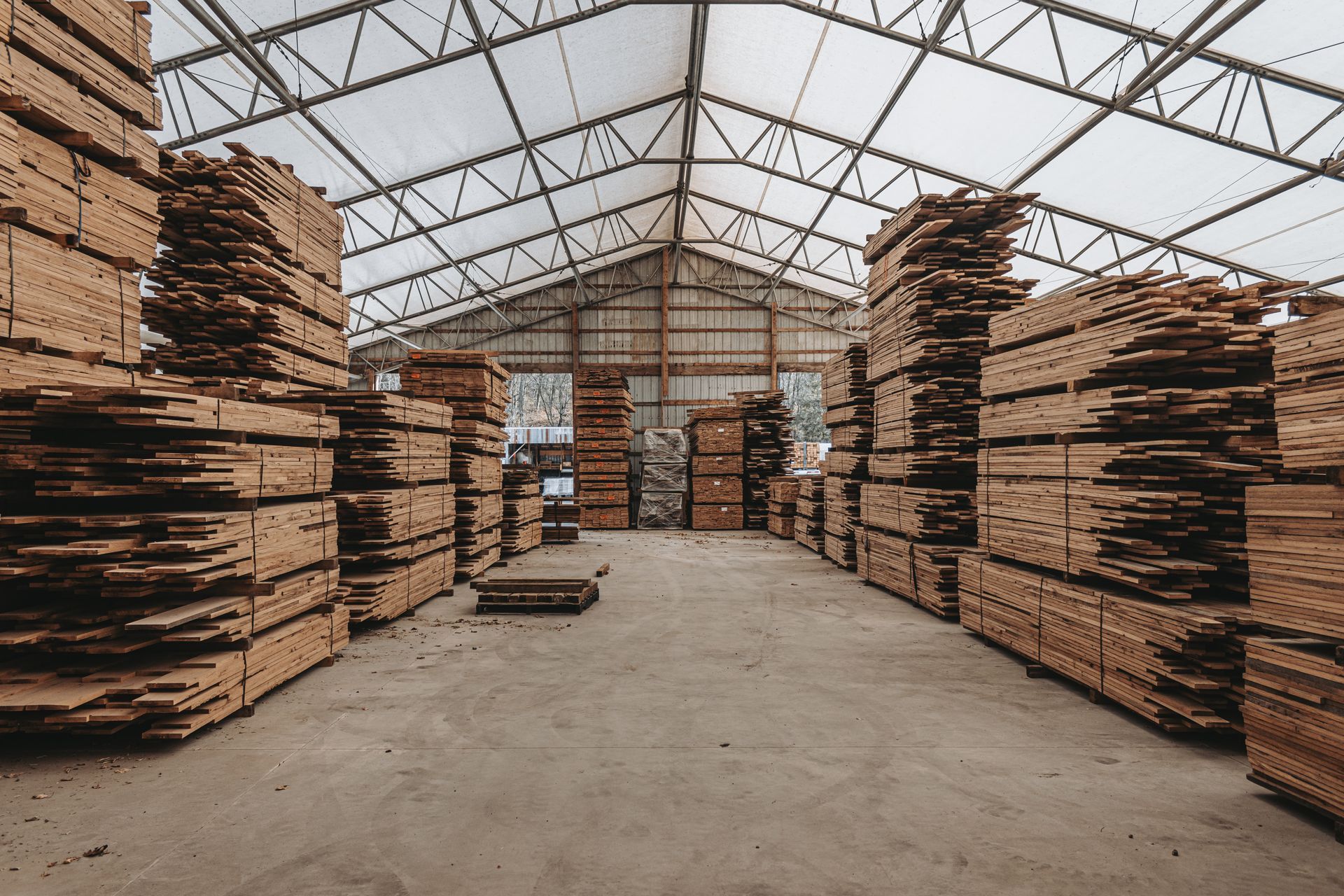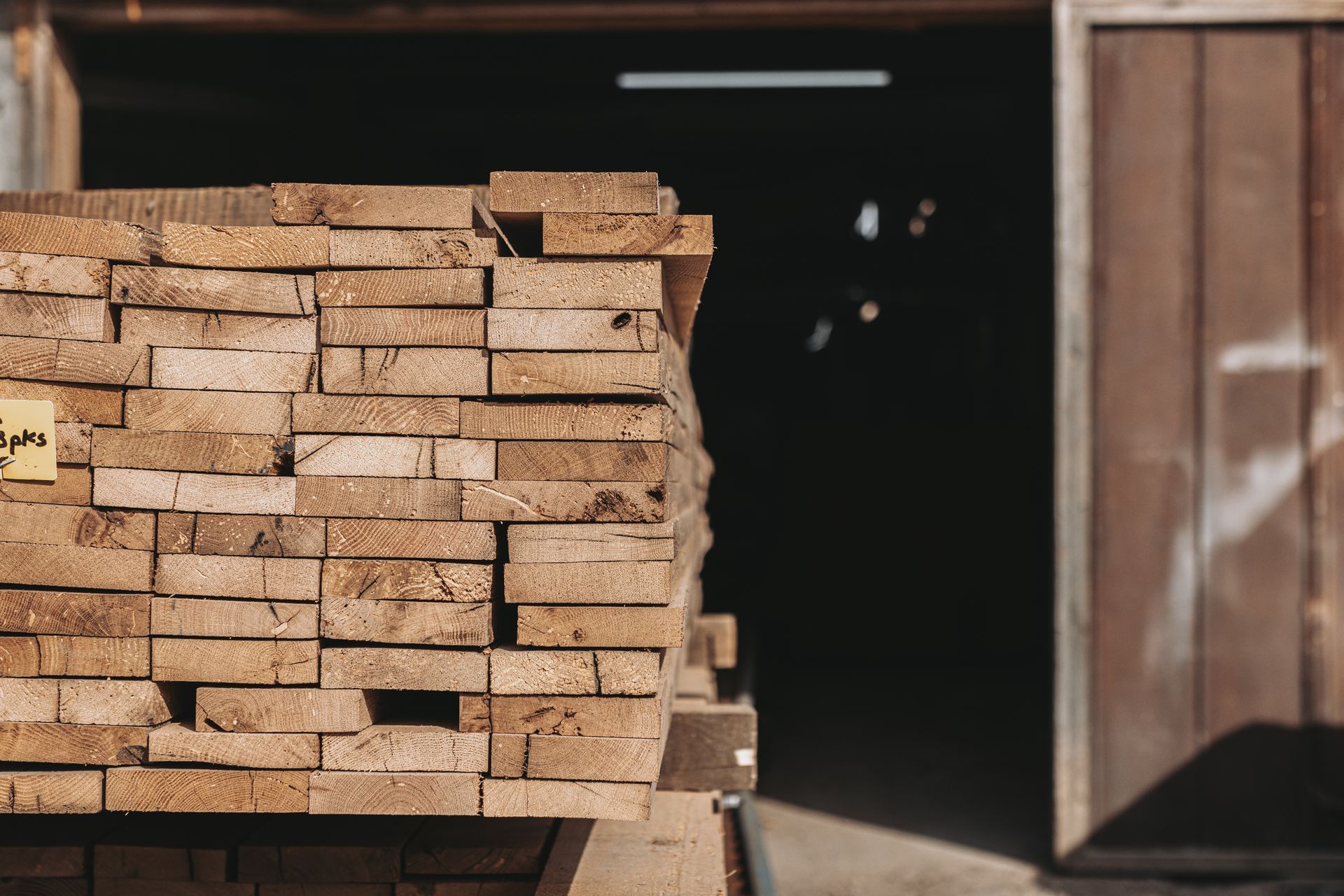Building Green? Timber Frame Construction Is the Answer!
Sustainable Timber Frames: The Smart Choice for Eco-Friendly Homes

Environmental concerns are growing, and the building industry is searching for better ways to meet our needs without harming the planet. Among the many "green" building options, one method stands out, not for its modern innovations, but for its long history of sustainability: timber frame construction.
If you're serious about building in a way that's good for the environment, timber framing should be on your radar. Let's break down why this traditional method is such a smart, eco-friendly choice.
What Makes Timber Framing Sustainable?
1. Wood is Renewable and Stores Carbon
Wood is one of the only building materials that nature can regenerate. Trees can be replanted and regrown. But this is just the start of timber's environmental benefits:
- Carbon Storage: While growing, trees pull carbon dioxide from the air. When the wood is used in construction, that carbon stays locked in, instead of going back into the atmosphere.
- Less Energy to Produce: Compared to steel or concrete, turning trees into timber uses way less energy. Manufacturing steel uses 24 times more energy, and concrete uses 5 times more!
- Local Sourcing: Timber can often be harvested nearby, which means less pollution from shipping it over long distances.
Our environmental building expert sums it up nicely: “A timber frame home can store tons of carbon, equal to taking a car off the road for years. While many building methods harm the environment, timber framing actually helps fight climate change.”
2. Energy Efficiency You Can Feel
Timber frame homes don’t just look great; they also perform well. They’re naturally energy-efficient because of how they’re built:
- Room for Insulation: Timber frames have deep walls that fit layers of high-quality insulation. Often, timber homes use special materials called structural insulated panels (SIPs), which keep out heat in summer and cold in winter.
- Stable Temperatures: Big timber beams hold heat and release it slowly, helping your home stay comfortable without needing as much heating or cooling.
- Air-Tight Construction: Timber frame homes can be sealed tightly, so air doesn’t leak in or out. This keeps energy use low.
- Green Add-Ons: Timber frame buildings can easily include other green features like solar panels or systems to collect rainwater.
3. Less Waste During Building
Timber frame construction creates less waste than other methods. Here’s why:
- Pre-Made Parts: Many timber frames are shaped and pieced together in a workshop before being sent to the building site. This means there’s less extra material left over.
- Reuse is Possible: Timber frames can be taken apart and reused for new projects. You can’t do that with concrete or steel.
- Biodegradable: Any wood leftover is natural and breaks down easily, unlike many modern building materials.
Why Timber Frames Are About More Than Just the Environment
Sustainability is important, but timber frames also come with other great benefits.
Natural Materials Are Healthier
Timber buildings often use fewer synthetic materials, which leads to some nice perks:
- Cleaner Air: Unlike some man-made materials, natural wood doesn’t release chemicals into the air.
- Balances Moisture: Wood absorbs and releases moisture, keeping indoor humidity at healthy levels.
- Feels Connected to Nature: Seeing and being surrounded by natural wood has been shown to lower stress and help people feel more relaxed.
Built to Last
A true eco-friendly building isn’t just green during construction; it has to last.
- Centuries of Use: Timber frames are incredibly strong. Many have lasted for hundreds of years, and some old structures are still standing!
- Aged Beauty: Instead of looking worse over time, wood develops character, with rich textures and colors that improve as it ages.
- Flexible Design: Timber frame homes don’t need interior load-bearing walls, which means you can change layouts easily as your needs change.

Debunking Myths About Timber Frames
There are some common misunderstandings about timber building, but they don’t hold up:
- “Cutting Trees is Bad for Forests”
When timber is collected responsibly, forests can thrive. Certified organizations like the Forest Stewardship Council (FSC) ensure that harvesting practices protect wildlife, allow forests to regrow, and maintain clean water. - “Wood Can’t Last Like Steel or Concrete”
History disproves this! Many timber structures over 500 years old are still standing. Additionally, large timbers don’t burn as easily as people think. They char on the outside, which protects the inner structure. - “Timber Framing is Too Expensive”
While initial costs may be higher, timber frame homes save money in the long run with lower energy bills, reduced maintenance, and higher resale values. Plus, a well-built timber frame can last for generations, making it a smart investment.
The Ultimate Green Choice: Reclaiming Old Timber Frames
For the greenest option, consider using historic reclaimed timber frames. Bay & Bent specializes in finding, restoring, and repurposing these remarkable frames. By reusing wood from old buildings, we can save trees and honor craftsmanship from the past.
Here’s why it’s so sustainable:
- Zero New Trees Cut: You’re using wood that already exists.
- Preserving History: Reclaimed wood holds cultural and architectural value.
- Unique Style: Aged wood has character that you can’t get with freshly cut timber.
We carefully remove historic frames, restore them, and prepare them for modern use. This approach ensures their timeless appeal and durability for future generations.
Building for the Future with Timber Frames
The climate crisis demands that we build in smarter ways, and timber frame construction is a true solution. It combines traditional wisdom with modern sustainability, creating homes that are beautiful, efficient, and kind to the planet.
Whether you choose wood from sustainable forests or reclaimed historic timber, building with a timber frame is one of the best things you can do for the environment. You’re not just making a home, you’re creating a lasting legacy that balances comfort and care for the Earth.









